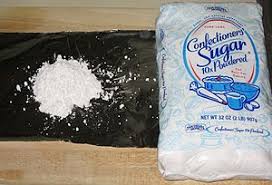Sugar comes from
sugar cane and is not white or naturally granulated. Cane sugar is brown and sticky. Sugar goes through a series of refinements to
become the stuff you buy at the grocery store.
In the colonial past, sugar was referred to in recipes and journals as a
sugarloaf. It was generally sold in a
cone shape made that way for ease of stacking in shipment from country to country. It was wrapped in cheesecloth or paper to
keep it from sticking to its neighbor. A
sugar loaf may have been sold in two pound to ten pound cones. Once you got it home, you shaved off the
sugar and crushed it as needed. 


From
most of my research I find sugar recipes from the early American days the sugar
was a light brown sugar. This means it
still contained an amount of molasses. If
you have a recipe that requires brown sugar and you have none, use white sugar
and a teaspoon of molasses. Just
remember to reduce the liquid ingredients by the same amount! There, you have brown sugar!
Have you ever
noticed the Xs on the sacks of sugar in the cartoons (if you are my age)? Perhaps you noticed it in the background of
the general store in the TV show, Little House on the Prairie, perhaps
not. Anyway, Ten X sugar is powdered
sugar. This means the table sugar you
buy at the grocer’s has been sent through an industrial blender pulsing and
beating the grains into dust. You can do
this at home in your blender! You cannot
do this by hand with a hand beater!
If you are storing
sugar for your long term prep needs or you keep your sugar in the refrigerator to avoid ants and you check in on your supplies, don’t
toss the sugar if it is hard or stuck together.
As a matter of fact, I prefer to store sugar in a sugarloaf. I add a few drops of water for each pound or
so and stir it. I take out a measured
portion that will fit into the recesses of a cupcake baking pan, usually one
half cup. I then press it into the
cupcake pan with the back of a spoon to make it tight and level. Let it air dry. The water evaporates leaving you with
hardened sugar loafs that stack and store easily. Keep it air tight in a container or plastic
bag. To use sugar in a smaller amount,
grate on a cheese grater before measuring and adding to your recipes.
If you are planning
to put up fruits in jams and jellies you can measure sugar into zippered
plastic bags and mark the outside showing how many cups or how many pounds with
a dark permanent marker. These can be left to be used only when putting up your
fruits. This is a visual aid to teach
you how to plan for future uses and to learn what are your true needs. This method of storing also allows for packing sugar into the edges of any container. Putting a rectangular bag of sugar in a round five gallon bucket wastes space. The baggie method lets you fill every square inch.
Just for fun, you
should know the only difference between a peppermint and a caramel candy is flavoring
and temperature. Caramel is butter and
sugar and stirring and stopping at the proper temperature. Pepper-mints are just sugar and flavoring and
stirring and stopping at the proper temperature. If you do not pack a candy thermometer in
your prep kitchen, just drop some sugar into cold (icy) water and roll the
sugar in your fingers, when it makes a soft ball, the caramel is done, if it
turns into threads that are brittle, it is a hard candy!
3 comments:
Wow thats some cool info
Good to know. Sadly however our sugar is being switched from the healthy sugar cane to the less healthy sugar beet.
As alwayd "nee& imroved just means cheaper to produce and sell higher price
Post a Comment